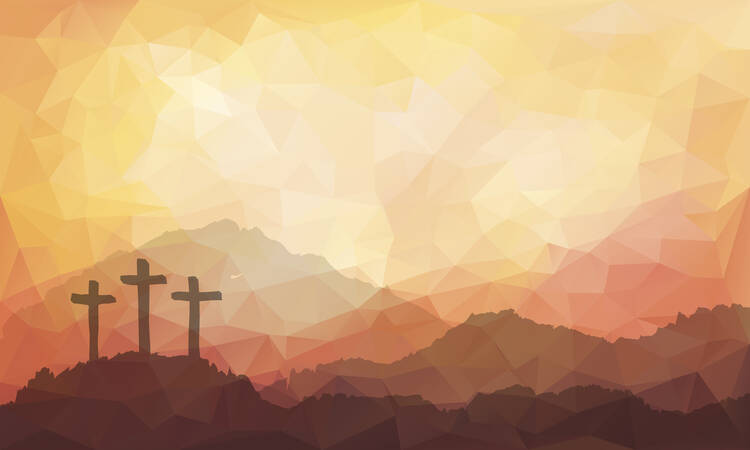It often surprises me how many Catholics (including some priests and deacons) still don’t know, or can’t accurately explain, what the Easter Triduum is! Many know that the word “Triduum” means “three days,” so they might think it refers to Holy Thursday, Good Friday, and Holy Saturday—the three “days” just before Easter Sunday. Some also (erroneously) believe that these are the last three days of Lent.
Most readers of America certainly know that the Season of Lent ends on Holy Thursday afternoon, and that the Easter Triduum includes the three “days” from what we call Holy Thursday (evening) to Easter Sunday (evening). But living in today’s world, doesn’t the period from Thursday to Sunday seem to us, and to most people, like four days, rather than three?
Moreover, don’t most of us actually think of Holy Thursday and Good Friday as two different days within the Easter Triduum, especially since they involve separate liturgical services? And don’t we think of the Easter Vigil (with its long, complex, and unusual service) as distinct from Easter Sunday (with Masses that are “normal” in most respects, except for lilies, double alleluias, and maybe a sung dismissal)? The liturgical schedules of many parishes might subtly reinforce such inaccurate views, especially if services are held at the same time each evening (Thursday to Saturday), followed by the “usual” Mass schedule on Sunday.
Living in today’s world, doesn’t the period from Thursday to Sunday seem to us, and to most people, like four days, rather than three?
But what is a “day”? And when does it begin? When I asked the children in a parish religious education program recently, most said that a day is a 24-hour period beginning at midnight. When asked further about the difference between “day” and “night,” some said a day begins at sunrise, while others said it begins when they wake up. All were surprised when I explained the ancient Hebrew method of telling time, in which a new “day” begins at sunset! But having learned that, they not only understood how the Easter Triduum was really just three “days,” but also why the first creation story in Genesis (read at the Easter Vigil) repeatedly says, “Evening came, and morning followed, the first (2nd/3rd/nth) day” (Gen 1:5, 8, 13, 19, 23, 31).
As a biblical scholar, I try to stress that all of the events of Jesus’ Passion took place on the first day of the Triduum: the Last Supper, Jesus’ Prayer, Arrest, Trials, Crucifixion, Death, and Burial—all took place within 24 hours, according to all four Gospels. And what happened on the second day of the Triduum: Nothing! Jesus’ body was simply in the tomb, while the people rested on the Sabbath. And when did Jesus rise from the dead? The biblical answer is clear: “On the third day” (Matt 16:21; 1 Cor 15:4; etc.), although not necessarily after dawn! By then, the tomb is already empty, while the resurrection itself—which is not described in any of the canonical Gospels, but only in the apocryphal Gospel of Peter—might have taken place at any time in the dark pre-dawn hours of “the third day.”
Given the decline in religious literacy today, I’m becoming more and more convinced that it is important to include some such “basics” of our faith in all of our teaching and preaching. It should not necessarily be the main focus of a homily or sermon, but can at least be done in introductory remarks or brief asides. Even if we think our congregations are well-educated overall, there are bound to be many people who are unaware or unsure of things we might take for granted. So reviewing a few basics of our faith, stressing the multi-valence of common words, and emphasizing the differences between our post-modern world and the ancient world-views of the biblical texts (but without reducing the entire homily to a catechetical lesson) would not only teach many people new things, but would also make others feel good about what they already know.
As for the Easter Triduum, instead of thinking of Holy Thursday, Good Friday, and the Easter Vigil as the three main liturgical services, followed by the multiple Masses of Easter Sunday, we would do better to stress the unity/passion of the first day (from Jesus’ Last Supper to his Crucifixion and Burial), the rest/void of the second day (Jesus in the tomb, people simply waiting), and the joy/life of the third day (uniting more closely the Easter Vigil and Easter Sunday).









